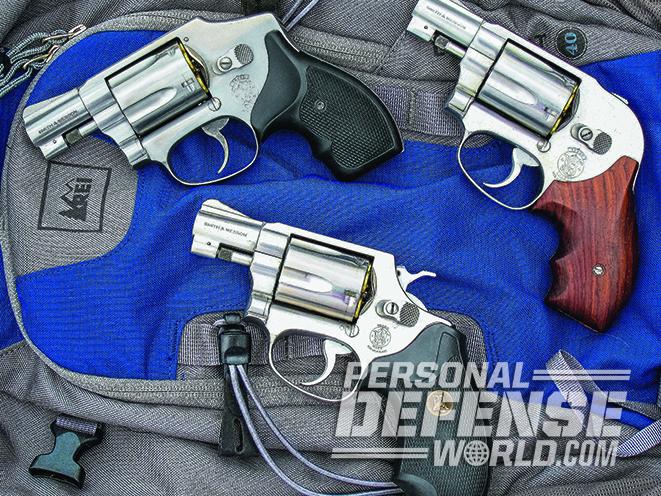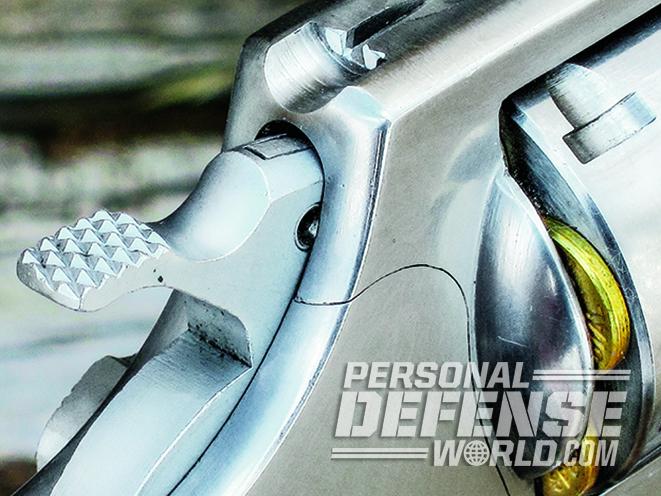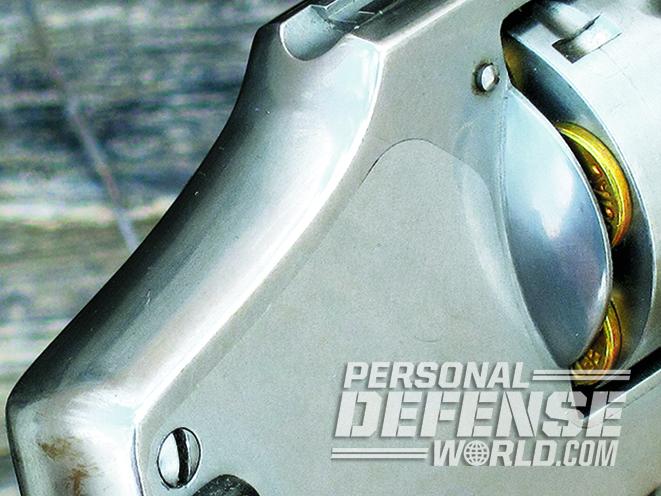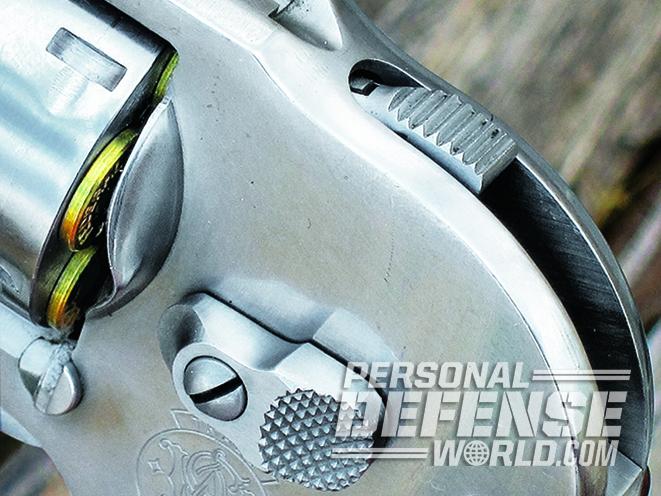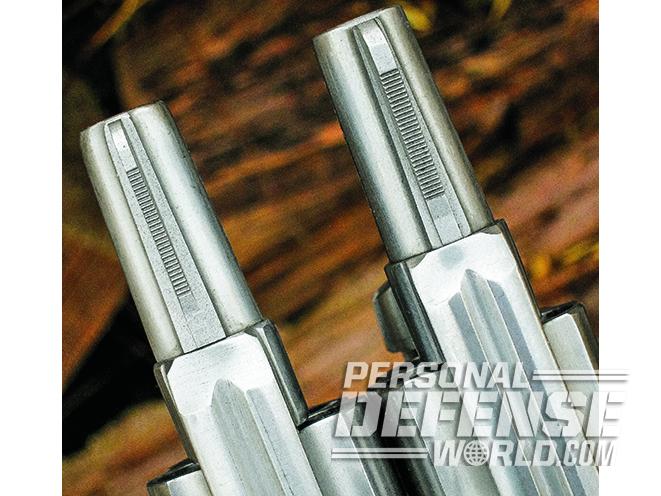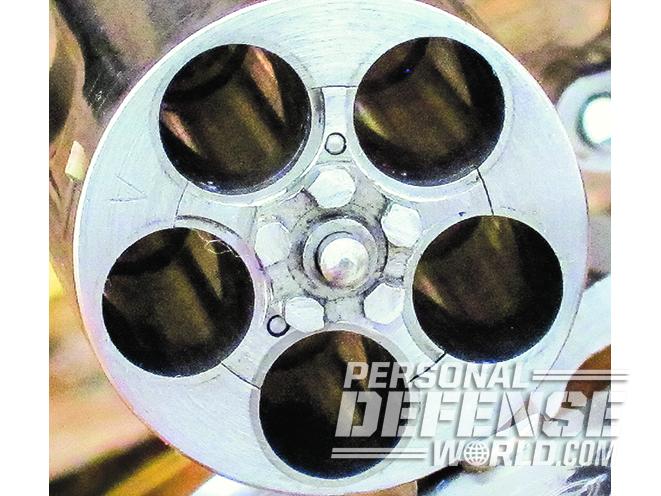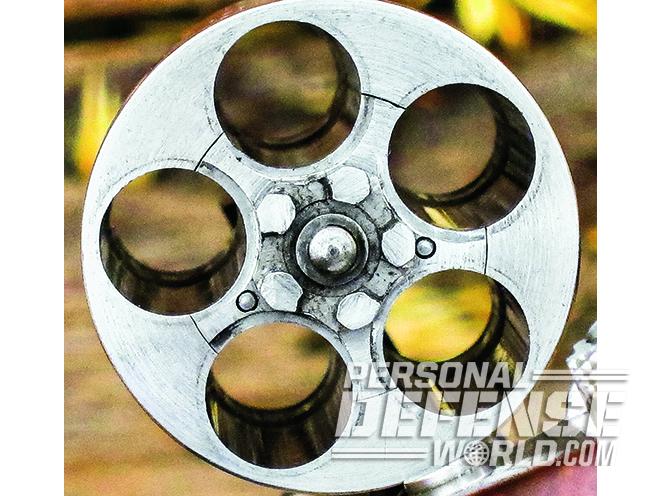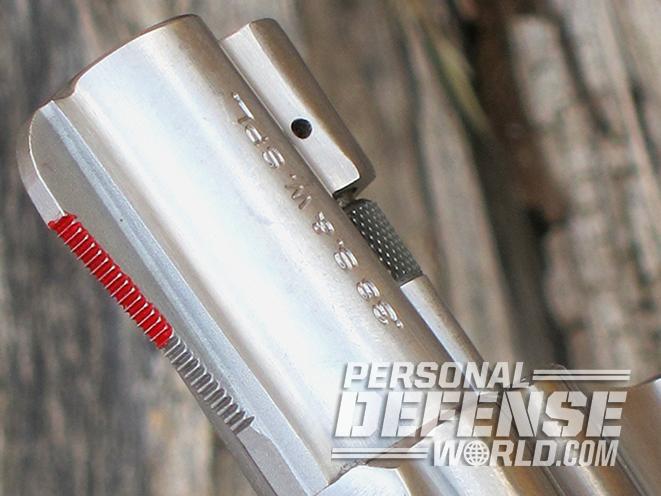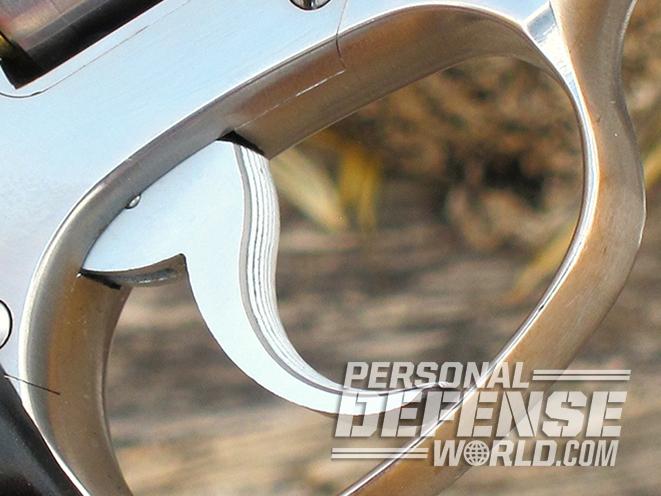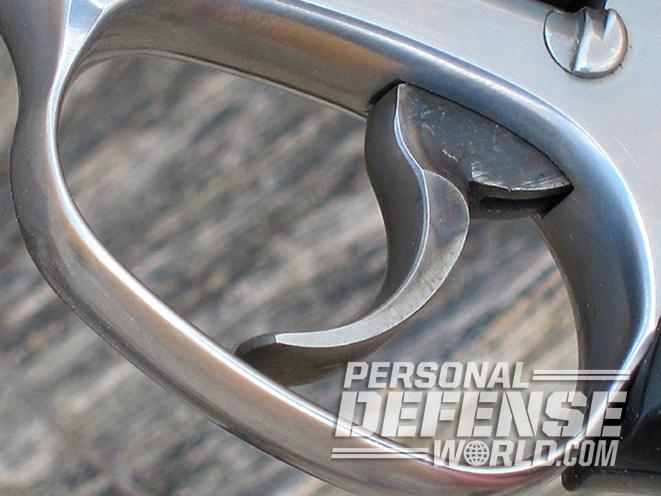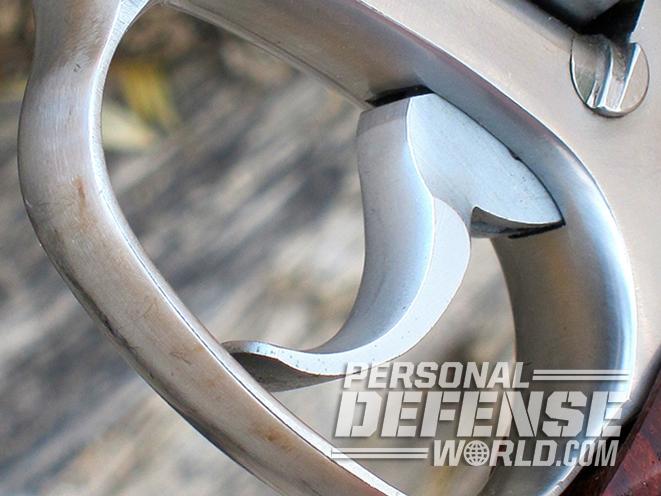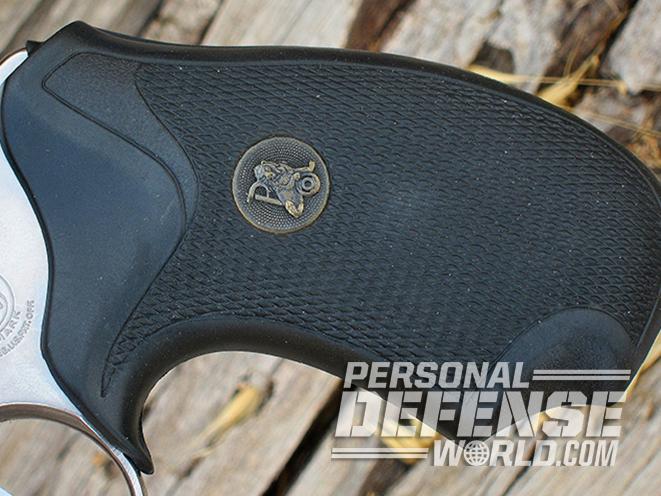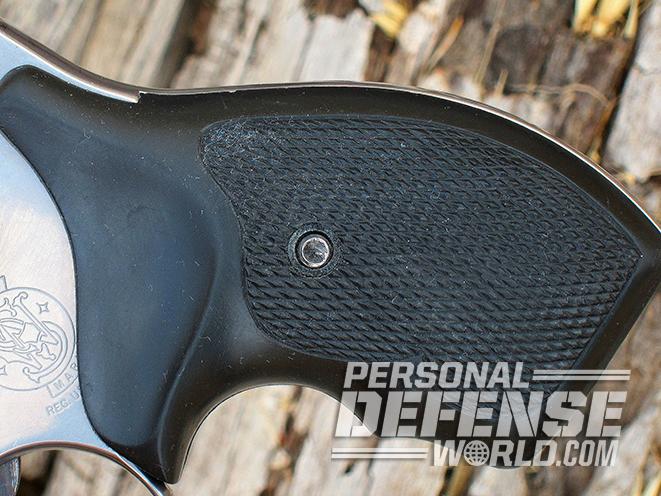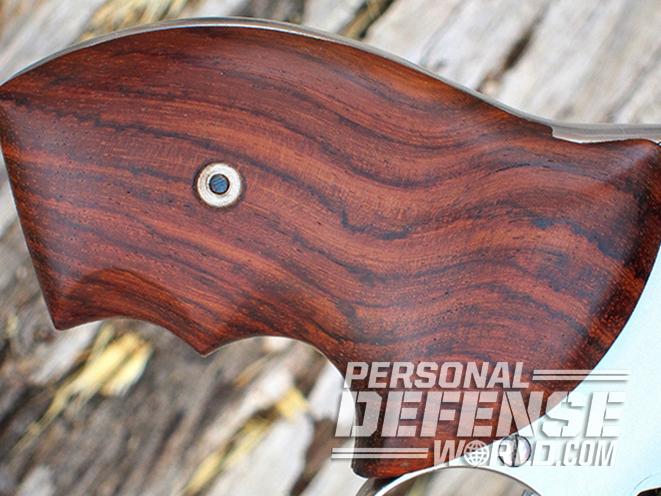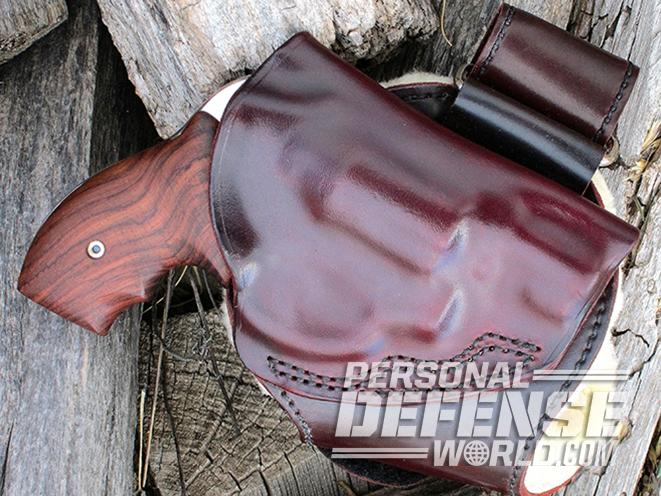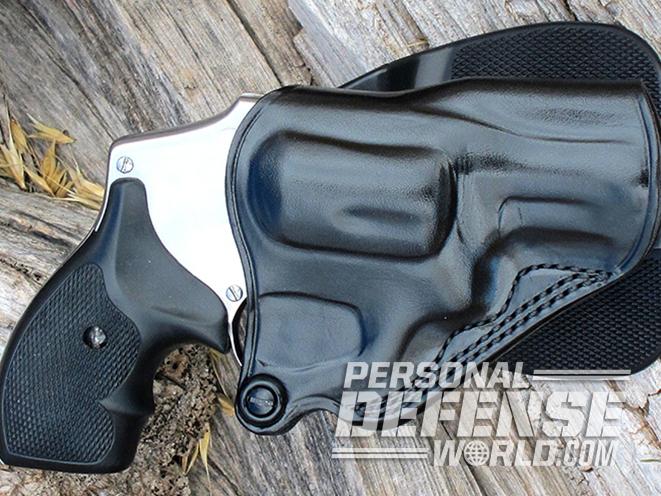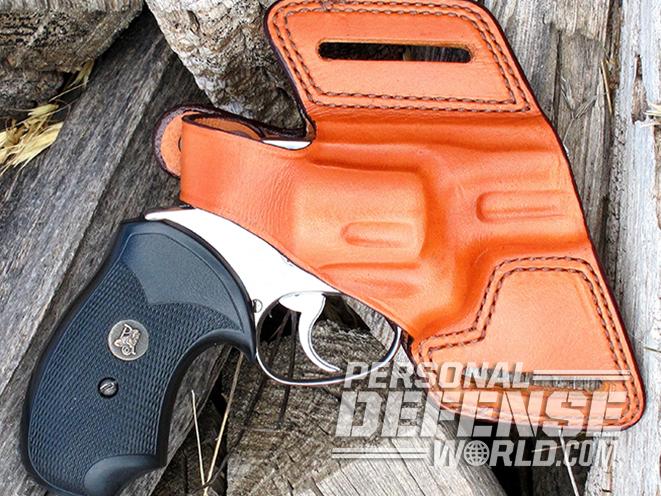In 1950, Smith & Wesson introduced a totally new compact, five-shot, .38 Special, snub-nose revolver at the International Association of Chiefs of Police (IACP) convention held in Colorado Springs, Colorado. The new J-Frame size was intended to fill a position between the slightly smaller I-Frame and the larger K-Frame, both dating from the late 1890s. The J-Frame was a happy marriage between the power of the K-Frame, in its typical .38 Special chambering, and the concealability of the I-Frame in the .32s of the era, and in a very astute marketing move the company allowed the convention attendees to name the new gun. Not surprisingly, among a delegation of police chiefs from all parts of the country, the winning designation was “Chief’s Special.”
The original Chief’s Special was a blued double-action/single-action (DA/SA) revolver with a thin 1.81-inch barrel, fixed sights, a casehardened trigger and hammer, a round-butt grip frame, a coil mainspring and checkered walnut grips. In 1957, when S&W decided to start using model numbers, it became the Model 36. An instant hit among chiefs and plainclothes cops who liked the .38 Special but not the weight or bulk of a Model 10 K-Frame with fixed sights or Model 15 with adjustable sights, civilian and LE buyers considered losing one round from a larger six-shot revolver as more than a fair trade for a very convenient package that carried well on the belt, in a pocket or on an ankle, and the J-Frame was quickly off and running.
Since 1950, the J-Frame has been—and still is—one of Smith & Wesson’s greatest success stories, and one of its best-selling frame sizes. That first Model 36 was followed by another milestone for the company when the Model 60 was introduced 15 years later in 1965 as the industry’s first regular production stainless steel revolver. The Model 60 mirrored the Model 36 in form, with the same dimensions (with the exception of a 1.88-inch barrel) machined out of stainless instead of carbon steel, and if you think the Model 36 was a winner right out of the gate, the Model 60 immediately created a backlog in orders not equaled until Dirty Harry came along with his .44 Magnum Model 29 in 1971. Waiting times ran up to six months at local gunshops, and the corrosion-resistant snubbie quickly became one of the most popular primary and backup carry guns in America.
Advertisement — Continue Reading Below
The J-Frame was a natural for further development. Aluminum versions followed, sighted versions followed, longer barrels followed, “hammerless” versions followed, and the .357 Magnum caliber eventually followed. The complete list of J-Frame models that Smith &Wesson produced in the past 66 years is way too long to cover here, but two of the most significant early variations now considered classics in the “Snubbie Hall of Fame” are the Model 40 Centennial from 1952, with its totally enclosed internal hammer, and the Model 49 Bodyguard from 1959 with its integral hammer shroud. Both were blued steel models following the basic size of the Model 36, but with two different approaches to snag-free hammer designs for pocket carry and, if needed, pocket firing. Stainless variants of both were inevitable when S&W developed the manufacturing process for the Model 60; the Model 40 begat the 640 in 1990, and the Model 49 generated the 649 in 1985.
Today, with high-tech polymers being so popular, sometimes a look backwards shows what old school was like—and what old school can still do for us.
Model 60
Advertisement — Continue Reading Below

The Model 60 sample shown here dates from 1981, which I acquired with the Pachmayr Compac grips installed as well as the small, original walnut grip panels as a package deal. According to the dealer, it was a former law enforcement revolver, traded in by its owner.
As a 1981 representative, my Model 60 shows the assorted scuffs and minor surface scratches you’d expect an honest working gun to acquire over a 35-year span of use. It also features a flash-chromed hammer and a narrow, 0.24-inch-wide, serrated “service” trigger.
Initially the Model 60 was built with stainless small parts, but after finding those weren’t holding up with the stainless formulation and processes of the day, the company went to matte chrome finishes over carbon steel to maintain durability and still provide rust resistance. Carried in pockets and ankle rigs, the little snubbie was subjected to working conditions that could (and did) frequently destroy bluing and cause notable corrosion issues in the older blued Model 36, and the idea was to extend that corrosion protection into the smaller exposed parts of the Model 60, too.
Advertisement — Continue Reading Below
In 1981, S&W hadn’t yet switched to the current frame-mounted firing pin system begun in the late 1980s; this Model 60 uses the familiar traditional “hammer nose” firing pin and the older pinned ejector star, and it’s one of the first Model 60s to omit the pinned barrel. In very good mechanical shape with a reasonably tight lockup and barely any detectable fore and aft cylinder movement, the internals show a very light tune-up consistent with what a police armorer would do, and the SA trigger breaks crisp and clean at an excellent 3 pounds. Unloaded with the Pachmayr grips on, the revolver weighs 22 ounces.
Model 640

The Model 640 was produced from 1989 to 1996, and mine is also a former LE gun, but in this case it’s my own, bought new circa 1995 with a set of Uncle Mike’s checkered rubber boot grip panels from the factory. This Model 640 is a solid little soldier—very smooth externally, totally snag-free and a great pocket gun with its double-action-only (DAO) trigger. It’s totally enclosed hammer ensures nothing will snag and slow me down on the draw.
Advertisement — Continue Reading Below
This sample features the casehardened hammer with a hammer-mounted firing pin and casehardened trigger that S&W sandwiched between the earlier 1980s-era chromed parts and the later 1990s MIM versions. The smooth-faced, 0.312-inch-wide “combat” trigger weighs more than my 8-pound trigger gauge can read, but the trigger pull is very smooth considering the smaller geometry and leverage the J-Frame has to work with. In fact, this S&W came with such a good trigger out of the box that I saw no reason then or since to bother doing any action work on it. No, it’s not as easy to shoot accurately as a single action, and it’s definitely not a 50-yard target gun, but it’s very usable within its design parameters.
It also features the pinless extractor star that was incorporated into the Model 640 along with those rubber boot grips in 1994. For decades, in each of its DA revolvers, S&W used two tiny locator pins embedded in the rear of the cylinder that aligned with corresponding holes in two star “arms” to correctly position the star when it returned to its normal resting place after ejection. Those pins were vulnerable to bending under overly enthusiastic ejector manipulation and could occasionally fall out after many years of hard use. The new design was stronger, less likely to fail, cheaper to manufacture, worked every bit as well, and you can see how the star arms were machined to fit in their recess in the included photos.
Model 649
Advertisement — Continue Reading Below

Failing the “Ugly Test” for most of us, the Model 649 Bodyguard, shown here in its original .38 Special form from 1985 to 1998, is another ex-cop gun, again my own and acquired new in 1986. But what this model does is far from ugly in providing a very useful DA/SA option with an integral hammer shroud for either close-in DA uses, pocket fire or longer-distance cocked SA uses. The high shroud completely protects the hammer spur from snagging in either direction while leaving just enough of it accessible to the thumb for cocking and/or decocking.
- RELATED STORY: 5 Compact Smith & Wesson Handguns
In 1986, S&W was still using the flash chrome on the hammer and trigger. My Model 649’s trigger is a non-serrated, smooth-faced, 0.312-inch-wide “combat” unit, and the hammer uses the older firing pin style, along with the older two-pin extractor. It originally came with small walnut grips, but I’ve never found those to be very effective in J-Frame sizes, so I replaced them with rosewood Eagle Secret Service grip panels.
The trigger on this sample remains unaltered from the day I bought the gun; it breaks at a slightly heavier 4 pounds in SA mode, but it’s still very clean with no take-up or overtravel. The DA pull is obviously beyond my trigger pull gauge, but it’s still smooth and neither gritty nor glitchy in the slightest. Compared to more recent versions of all three models using more automated equipment and less hands-on time at the factory, the triggers on all three of these J-Frames are quite nice, and there’s only a barely discernible degree of fore and aft cylinder travel on this model.
Advertisement — Continue Reading Below
These revolvers were produced in times when skilled fitters built them, and while today’s equivalents are perfectly serviceable, it’s not hard to see the difference that industrial progress and new manufacturing processes have made. Saying “They don’t make ’em like that anymore” isn’t a knock on any maker today—just an acknowledgement of “the way they used to be.”
Getting A Grip

There are two aspects of these snubbies that affect their performance more than any others, and if you guessed barrel lengths and triggers, you guessed wrong. The diminutive walnut grips that used to be standard on round-butt J-Frames for decades were absolutely tip-top and smashing for concealment, but for actually shooting the gun, not so much. They didn’t give even small hands much to hang onto, allowed the gun to shift position under recoil and made consistent follow-up shots a challenge, to say the least. If you get a chance to pick up an older J-Frame with factory walnut grips on it, count on replacing them if you plan to shoot it much.
Advertisement — Continue Reading Below
Among several fine choices for better hand-filling grips today, it’s easy to find one that creates more of a surface interface between the gun and your palm. The Pachmayr Compacs on the Model 60 have been around a long time, and they’re relatively thick with a non-slip surface that allows a full three-fingered hold without getting too bulky to offset the concealment factor you’d buy a J-Frame for in the first place, and they’re quite comfortable even with +P .38s in the small-framed Chief’s Special. Priced at $38 on pachmayr.com, they’re a good buy. Note, however, that one empty case will hang up against the forward edge of the left grip panel on ejection unless you trim the rubber a little there.

The rubber Uncle Mike’s boot grips on the Centennial are long out of production. They’re slightly smaller than the Pachmayrs, but they offer a good grip and won’t interfere with ejection.
The Bodyguard’s Eagle Secret Service grips are the thinnest of the three while still offering a good palm swell and filling in the space between the upper grip frame and the back of the trigger-guard. Their quality is a given, and they’re well worth a $60 hit on the credit card through eaglegrips.com.
Advertisement — Continue Reading Below
Seeing Clearly

Sights are the other limiting factor, and on stainless revolvers they’re just flat hard to find in a hurry and line up for accuracy. They’re small, and they’re bright in certain lighting. That doesn’t mean they’re useless—they just need a little help. In the past, to reduce glare and produce contrasts, I’ve blackened the front blade and rear notch face on fixed-sight stainless revolvers with model airplane paint, which works perfectly well. The Model 60 already had a reddish paint applied to its blade, and that color contrast may be faster in use than black on black for some eyes. Adding contrasts and eliminating the silvery glare-on-glare is always an improvement on these little blasters, and makes better shooters out of them and you.
J-Frame front sights, incidentally, have varied in width over the years. The two older examples, the 60 and 649, both sport 0.1-inch-thick blades while the later 640 has a 0.13-inch-thick blade. The rear notch in the topstrap sight channel is also correspondingly wider on the 640. This was a distinctly positive evolutionary step for the J-Frame. While most consider the snubs to be largely point-and-shoot “get off me” propositions, any simple modification that allows you to reach out and touch a bit farther is not a bad thing.
Point & Shoot

As an overview of these J-Frames, there wasn’t much point in bench-testing all three, so I took the Chief’s Special out for a spin as the newest addition to the family in testing for shootability. Normally, I’d test a handgun with a barrel this short out to 15 yards, but I pushed the envelope on a bright, sunny afternoon by shooting the Model 60 snubbie off a rest at 25 yards with four .38 Special loads: one 125-grainer, one 135-grainer and two 158-grainers.
- RELATED STORY: 4 Compact, Lightweight Rimfire Revolvers For Your Tackle Box
The red paint on the front sight blade helped, but it was still a challenge to line everything up on the black bullseye. The velocities ranged from 700 to 800 fps, and its accuracy was still minute-of-silhouette even with the two loads the little S&W liked the least. Considering the glare, the miniscule sight picture and the distance, I was moderately surprised that the best five-shot group with Hornady’s 158-grain XTP ammo was 3.94 inches. While I may not choose to shoot that far with a J-Frame, at least know I can if I have to. As you’d expect, the point of impact relative to point of aim varied between loads and bullet weights. That’s why it’s important to test your loads with your gun. The recoil, even with Speer’s 135-grain Gold Dot +P ammo, was very controllable thanks to the Pachmayr grips, and the gun was not at all uncomfortable to shoot.
Carry Options

Since J-Frames of all generations and variations are still in wide circulation, leather is easy to find no matter how you choose to carry one. The Bianchi Model 5 Black Widow Belt Slide is a long-running, lightweight standard that totes a Chief’s Special securely on a belt up to 1.75 inches wide with minimal fuss and bother. These holsters are available in black or tan from safariland.com.
Galco’s open-top Speed Paddle is one of the best quick-on/off paddle holsters on the market, and it works equally well on belts up to 1.75 inches wide with its adjustable tension screw. It’s also available in black or tan from galcogunleather.com.
Kramer Handgun Leather considers its open-top Ankle Gun Holster to be the Rolls Royce of ankle rigs. It’s constructed of tightly formed horsehide and sheep’s wool padding with hook-and-loop band adjustment. This one comes with a mahogany color for right or left ankles from kramerleather.com.
Classic Style
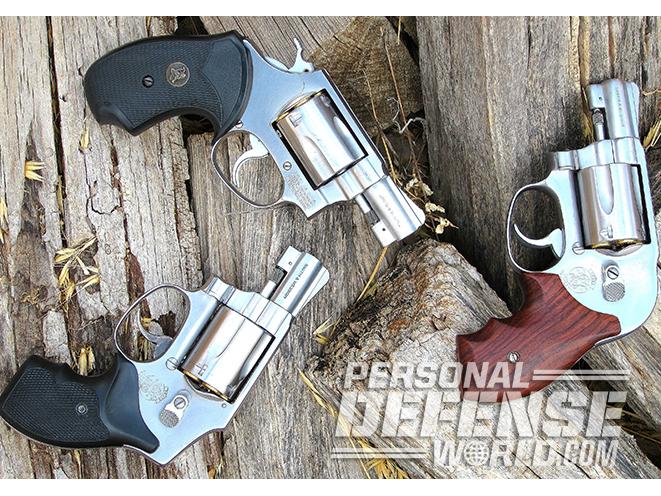
They may be thorough throwbacks with their solid steel heft in today’s plastic world, but these three classic J-Frames do a far better job of convincing your hand that what it’s holding really is a gun than their more modern, featherweight descendants. They soak up recoil more effectively and inspire as much confidence as a small .38 Special possibly can. They’ve ridden the river, walked the walk and brought countless owners back home from tight corners and dark encounters for well over half a century.
- RELATED STORY: Smith & Wesson’s M&P22 Compact Suppressor Pistol
Prices on the used market for good- to excellent-condition older samples run from $300 to $600. If you run across one in good shape for sale—which isn’t hard to find, since most were carried more than fired—don’t turn your nose up and let it slide on by. It’ll be money well spent on a dependable defensive tool or a new addition to a collection of important firearm milestones.
This article was originally published in ‘Gun Buyer’s Annual’ 2017. For information on how to subscribe, please email subscriptions@
